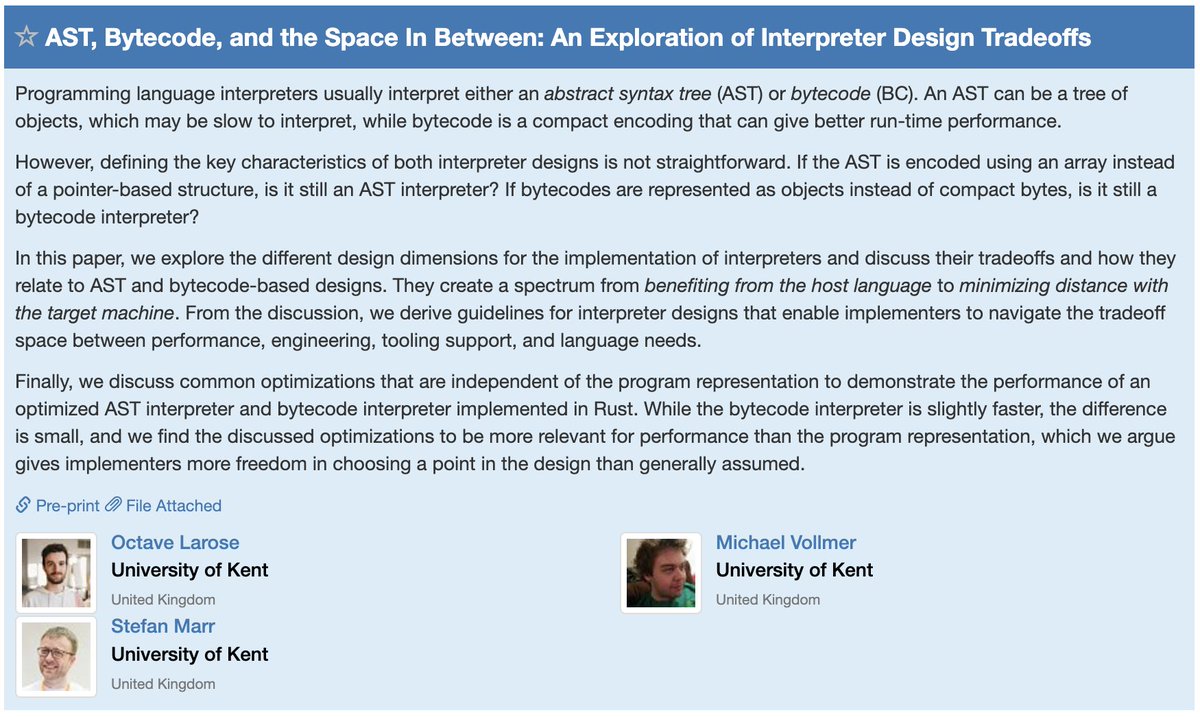
Marisa "Long Middle Name Looks Cool" Kirisame
@marisaverymoe
github.com/MarisaKirisame
ID: 710405068147699712
http://marisa.moe 17-03-2016 09:59:01
10,10K Tweet
2,2K Followers
1,1K Following


Had a great time talking about the astonishments I've experienced while thinking hard on invariant inference and finding myself studying learning theory. Also: SAT solving for metamaterials w/Yair Shokef, and the joys of feeling stupid. Hope you'll enjoy it. etaps.org/blog/034-yotam…



New paper: World models + Program synthesis by Wasu Top Piriyakulkij 1. World modeling on-the-fly by synthesizing programs w/ 4000+ lines of code 2. Learns new environments from minutes of experience 3. Positive score on Montezuma's Revenge 4. Compositional generalization to new environments

Vivek Galatage My favorite use case: CSS selectors (bugs.webkit.org/show_bug.cgi?i…). When looking for elements matching a selector, update a bloom filter of ancestor element class/ID/tag names to quickly reject elements without the necessary ones.








What's this? An abstract syntax tree? A bytecode? What does that even mean anymore? Next Wednesday, Octave Larose is going to explore those questions in his ICOOOLPS presentation. Our draft paper is online already: 2025.ecoop.org/details/ICOOOL… #interpreter #design #tradeoffs


One Happy Fellow Maybe this will help. blog.sigfpe.com/2008/08/untang… 😀







![Sam Westrick (@shwestrick) on Twitter photo taking a go at oxcaml today
first attempt: let's try a parallel reduction. Idea is to compute the "sum" of [f(lo), ..., f(hi-1)] in parallel, combining via some associative function g (and corresponding zero element, z). taking a go at oxcaml today
first attempt: let's try a parallel reduction. Idea is to compute the "sum" of [f(lo), ..., f(hi-1)] in parallel, combining via some associative function g (and corresponding zero element, z).](https://pbs.twimg.com/media/Gt10bAAWEAABbcI.png)
